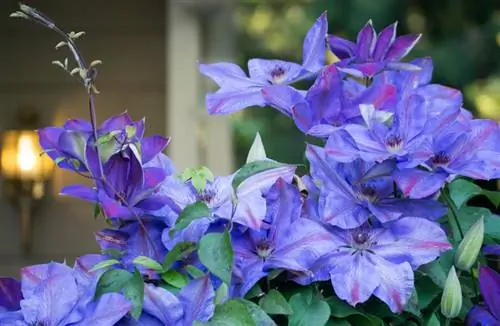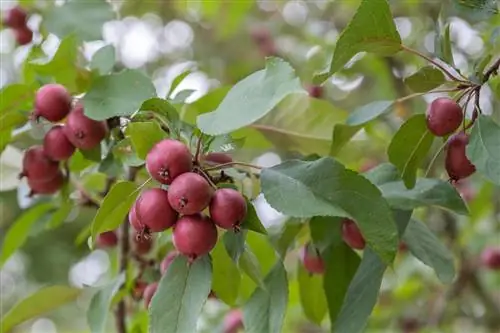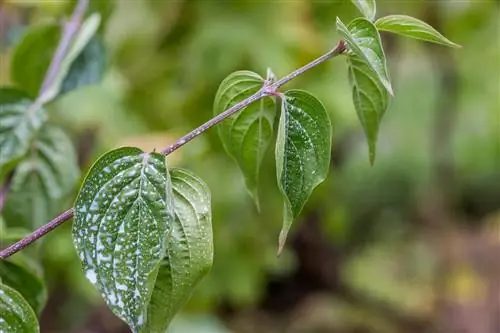- Author admin [email protected].
- Public 2023-12-16 16:46.
- Last modified 2025-01-23 11:20.
There are primarily two diseases that make life difficult for clematis. Find out here which symptoms you can use to recognize the infections and how to combat the diseases.

What diseases are typical of clematis plants?
The most common clematis diseases include clematis wilt and powdery mildew. The former is shown by brown spots on the leaves and leads to the death of the plant, while powdery mildew covers the foliage with a white patina. Both diseases can be combated by removing infected plant parts and targeted treatments with fungicide, algae lime or home remedies.
Identifying and treating clematis wilt
The number 1 source of danger for the clematis lurks especially during warm, humid summer days with temperatures above 20 degrees Celsius. If brown spots appear on the leaves, the clematis wilt has struck. The dreaded fungal infection causes the entire climbing plant to die within a few days. Here's how to deal with it:
- Clean out affected leaves in the early infestation stage
- Treat the infected clematis with an approved fungicide
- In the late infestation stage, cut off the clematis close to the ground
- The clematis sprouts again from the sleeping eyes in the ground
As a preventative measure, the plants are never watered over the flowers and leaves, but rather directly on the roots. If you plant clematis under a rain-protected eaves, the fungal spores rarely reach the foliage. If you re-establish Clematis at the site after a previous fungal infection, a complete soil replacement is recommended.
Mildew on clematis - symptoms and control
If a mealy-white patina covers the foliage of a clematis, you are dealing with mildew. This fungal infection spreads during both dry, hot weather and wet, cool summers. You usually have to deal with powdery mildew on clematis, which attacks the tops of the leaves. How to fight the disease with natural remedies:
- Cut off all affected plant parts and dispose of them in household waste
- Spray the sick clematis repeatedly with a mix of fresh milk and water in a ratio of 1:9
- Alternatively, treat with a solution of 1 tablespoon of baking soda, 1 liter of water and 1 splash of dishwashing liquid
Since the use of mixtures with water on a clematis can cause clematis wilt, we recommend the following treatment method if in doubt: Powder the leaves, flowers and shoots repeatedly with algae lime, pure wood ash or rock dust until the mildew disappears.
Tips & Tricks
It is primarily large-flowered hybrids that fall victim to clematis wilt. If you choose wild species and their varieties, the risk of infection is almost zero. The magnificent Italian clematis Clematis viticella and the mighty Clematis montana, for example, are among the largely resistant plants.






